
The UMTS Network and Radio Access Technology: Air Interface Techniques for Future Mobile Systems
Jonathan P. Castro
Copyright © 2001 John Wiley & Sons Ltd
Print ISBN 0-471-81375-3 Online ISBN 0-470-84172-9
EVOLVING MOBILE NETWORKS
While the history of mobile communications is long [1–3], and the background of mo
bile networks therebyx is also long, in this chapter we focus on the historic evolution in
terms of network architecture and services starting with 2nd generation (2G) mobile
systems. In particular we consider the development of the architecture of Global Sys-
tems for Mobile Communications (GSM), since it is by far the most widespread mobile
system in the world today. This will provide the basis to cover the introduction of Uni-
versal Mobile Telecommunication Services (UMTS) in relation to its Core Network
(CN) and radio architectures. The latter will in turn serve as the platform to present
UMTS Radio Access Technology, which is one the aims of this book.
1.1 THE GROWTH OF MOBILE COMMUNICATIONS
Today wireless voice service is one of the most convenient and flexible means of mod-
ern communications. GSM technology has been at the leading edge of this wireless
revolution. It is the technology of choice in over 120 countries and for more than 200
operators worldwide. Current estimates are that by the year 2001 there will be around
600 million wireless subscribers (e.g. mobile telephone users), out of which more than
50% will depend on GSM technology.
As the wireless revolution has been unfolding, the Internet has also shown a phenome-
nal growth simultaneously. The advent of the World Wide Web and web browsers has
propelled TCP/IP protocols into the main stream, and the Internet is widespread not
6
X
E
V
F
U
L
E
H
U
V
P
L
O
O
L
R
Q
V
0RELOH
,QWHUQHW
Figure 1.1 The growth of mobile and internet services.

2 The UMTS Network and Radio Access Technology
only in the corporate environment but also in households. Large number of consumers
have embraced the Internet and use it today to access information online, for interactive
business transactions, and e-commerce as well as electronic mail. Figure 1.1 illustrates
the growth in mobile and Internet subscribers.
The success of mobile communications, i.e. the ubiquitous presence it has established
and the emergence of the Internet point towards a tremendous opportunity to offer inte-
grated services through a wireless network.
One of the main market segments for wireless services besides corporate intra-
net/internet access is the consumer sector. The availability of intelligent terminals1 or
multipurpose wireless telephones is already ushering a new era of the information age,
where subscribers can receive directly through GSM-SMS: news, sport updates, stock
quotes, etc. However, the progress of audiovisual techniques and the support for a Web-
like interface in a new generation of terminals, will push consumers to a new era of
multimedia communications with a focus on services rather than technology.
To support the growth of Internet type services2 and future demands for wireless ser-
vices, ETSI SMG and other standards bodies3 have completed or are now completing
specifications to provide a transition platform or evolution path for wireless networks
like GSM. Figure 1.2 illustrates the wireless data technology options.
The technology options in Figure 1.2 can be summarized as follows:
14.4 kbits/s allows GSM data calls with a rate of 14.4 kbits/s per time slot, resulting
in a 50% higher data throughput compared to the current maximum speed of 9.6
kbits/s.
High Speed Circuit Switched Data (HSCSD) aggregates symmetrically or asym-
metrically several circuit channels, e.g. 28.8 kbits/s for two time slots (2 + 2) or
43.2 kbits/s for three time slots (3 + 1).
General Packet Radio Service (GPRS) enables GSM with Internet access at high
spectrum efficiency by sharing time slots between different users. It affords data
rates of over 100 kbits/s to a single user while offering direct IP connectivity.
Enhanced Data Rate for GSM Evolution (EDGE) modifies the radio link modula-
tion scheme from GMSK to 8QPSK. Thereby increasing by three times the GSM
throughput using the same bandwidth. EDGE in combination with GPRS (E-
GPRS) will deliver single user data rates of over 300 kbits/s.
UMTS as 3rd generation wireless technology utilizes a Wideband CDMA or
TD/CDMA transceiver. Starting with channel bandwidths of 5 MHz it will offer
data rates up to 2 Mbits/s. UMTS will use new spectrum and new radio network
configurations while using the GSM core infrastructure.
_______
1 For example WAP terminals.
2 Including voice or IP as a new trend.
3 In the USA – T1P1, in Japan – ARIB, in Korea – TTA, and in China – CWTS.

Evolving Mobile Networks 3
7URXJKSXWNESV
N
N
N
N
N
N
(YROXWLRQ<HDU
('*(
('*(
8076
8076
*356
*356
+6&6'
606
606
&LUFXLW
3DFNHW
Figure 1.2 Evolution for wireless networks4, e.g. GSM.
Although the circuit switched enhancements such as HSCSD will increase transmission
rates, it is packet switched enhancements, which will meet the challenges or demands
posed on current wireless networks. Thus, GPRS and UMTS with EDGE as an interme-
diate solution will provide the platform to support integrated services of voice and data
including multimedia.
While GPRS and UMTS meet the demands for Internet (IP) features and higher band-
widths in mobile networks, another evolution step is taking place in the network infra-
structure. This is the convergence of single networks into a multi-purpose backbone
network. The next section covers this step, which will have also impact on the imple-
mentation of UMTS radio access technology.
1.1.1 Convergence of Fixed and Mobile Networks
&RQYHUJHQFH LH WKH FORVHU LQWHUZRUNLQJ EHWZHHQ IL[HG DQG PRELOH WHOHFRPPXQLFD
WLRQVDOWKRXJKLWKDVORQJEHHQDEX]]ZRUGLQWKHWHOHFRPPDUNHWLVQRZFRPLQJLQWR
UHDOLW\$V(ULFVVRQSXWVLW>@IL[HGDQGPRELOHFRQYHUJHQFHLQFOXGHVHYHU\WKLQJIURP
QHZVHUYLFHVWRWKHLQWHJUDWLRQRIQRGHVQHWZRUNVDQGRSHUDWLQJV\VWHPV7KHXVHUPD\
KDYH HJ WKH VDPH YRLFH PDLOER[ IRU IL[HG DQG PRELOH WHOHSKRQ\ ZKLOH WKH RSHUDWRU
FDQ DOVR XVH WKH ODUJH VHFWLRQV RI WKH QHWZRUN LQ D FRRUGLQDWHG PDQQHU IRU GLIIHUHQW
W\SHV RI DFFHVV 7KXV FRQYHUJHQFH LV QRZ D QHZ IURQWLHU LQ FRPPXQLFDWLRQV ZKHUH
8076ZLOOHYROYH
)LJXUH LOOXVWUDWH KRZ VLQJOH VHUYLFH QHWZRUNV ZLOO HYROYH LQWR PXOWLSXUSRVH QHW
ZRUNV ZLWK PXOWLOHYHO DFFHVV SRLQWV :LWK ,3 EHFRPLQJ PRUH SHUYDVLYH LQ WKH EDFN
ERQHWKHFKDOOHQJHRILQWHJUDWLQJYRLFHDQGGDWDVHUYLFHVLQWKHIL[HGDQGPRELOHHQYL
URQPHQWEHFRPHPRUHIRUPLGDEOH
_______
4 IS-136 has adopted EDGE as its air-interface expansion.

4 The UMTS Network and Radio Access Technology
3UHVHQW
6LQJOH6HUYLFH1HWZRUNV
'DWD,3
1HWZRUNV
3/01
3671
,6'1
&DEOH
79
,QIRUPDWLRQ
6HUYHUV
&OLHQWVWRZDUGV,QWHJUDWHG
6HUYLFHV
0XOWL/HYHO6HUYLFH
%DFNERQH
0XOWL/HYHO
$FFHVV
3RLQWV
0XOWL/HYHO
$FFHVV
3RLQWV
,QWHOOLJHQW&RPPXQLFDWLRQV
&RQWURO
&RQWHQW
,QSXWV &RQWHQW
,QSXWV
0XOWL/HYHO
$FFHVV
3RLQWV
)XWXUH
0XOWL6HUYLFH1HWZRUNV
7KH0XOWLVHUYHU&OLHQW&RQFHSW
$FFHVV7UDQVSRUWDQG
6ZLWFKLQJ1HWZRUNV
Figure 1.3 Multi-service network.
Table 1.1 The Converging Industry in Telecommunications, Computers and Media
Wire-line Wireless Mobility
Telecom
Industry
PSTN PTN ISDN 2G 2.5 G 3G
mobile
3G
Internet
New
Telecoms
Computer
Industry
Main
Frames
Desk top
Computing
PC-LAN PC-
Servers
PC-
WAN
Internet / Intranet WWW
Electronic Commerce
Converged
Industry
Media
Industry
Electronic Publication
Interactive Entertainment
New battle
ground
It boils downs to the transformation of the Telecom, Computer and Media Industry,
resulting into the Converged Industry as illustrated in Table 1.1.
Clearly then, UMTS will be part of the convergent Industry with a trend towards multi-
services within integrated infrastructures.
1.2 THIRD GENERATION MOBILE SYSTEM REQUIREMENTS
Although third generation (3G) systems involve primarily infrastructure change in the
Air-Interface (AI), it also has impact in the service configuration options and the access

Evolving Mobile Networks 5
to the Core Network (CN). Hence, the 3G, or more specifically UMTS requirements in
this section cover three main areas, i.e. services, air-interface, and core network access.
1.2.1 UMTS Services Aspects
The scope of services can be largely focused on different issues like service manage-
ment, charging and billing, terminals, network management, quality of service, and se-
curity. Here, however, we will be looking at services from the principle side in other to
establish a framework to present the UMTS air-interface. An extract of the service prin-
ciples outlined in the ETSI specifications UMTS Services aspects – Service Principles
and UMTS Services [4] and Services capabilities [16], can be summarized as follows:
UMTS is the realization of a new generation of mobile communications technology for a
world in which personal communications services should allow person-to-person calling,
independent of location, the terminal used, the means of transmission (wired or wireless)
and the choice of technology.
UMTS shall therefore be in compliance with the following objectives:
(a) to provide a single integrated system in which the user can access services in an easy
to use and uniform way in all environments;
(b) to allow differentiation between service offerings of various serving networks and
home environments;
(c) to provide a wide range of telecommunications services including those provided by
fixed networks and requiring user bit rates of up to 2 Mbits/s as well as services spe-
cial to mobile communications. These services should be supported in residential,
public and office environments and in areas of diverse population densities. These
services are provided with a quality comparable with that provided by fixed net-
works such as ISDN;
(d) to provide services via hand held, portable, vehicular mounted, movable and fixed
terminals (including those which normally operate connected to fixed networks), in
all environments (in different service environments – residential, private domestic
and different radio environments) provided that the terminal has the necessary capa-
bilities;
(e) to provide support of roaming users by enabling users to access services provided by
their home environment in the same way even when roaming.
(f) to provide audio, data, video and particularly multimedia services;
(g) to provide for the flexible introduction of telecommunication services;
(h) to provide the capability to support Universal Personal Telecommunications (UPT);
(i) to provide within the residential environment the capability to enable a pedestrian
user to access all services normally provided by fixed networks;
(j) to provide within the office environment the capability to enable a pedestrian user to
access all services normally provided by PBXs and LANs;
(k) to provide a substitute for fixed networks in areas of diverse population densities, un-
der conditions approved by the appropriate national or regional regulatory authority.



![Công nghệ mạng không dây: [Thông tin chi tiết/Mới nhất/Tốt nhất]](https://cdn.tailieu.vn/images/document/thumbnail/2013/20131126/garap01/135x160/6171385439038.jpg)


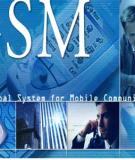
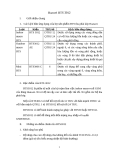

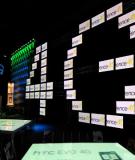
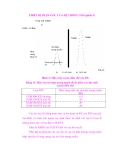


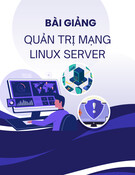

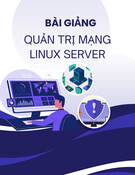
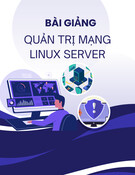
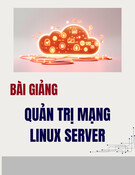
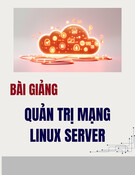
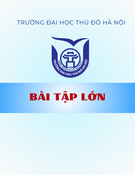
![Đề thi cuối kì Nhập môn Mạng máy tính: Tổng hợp [Năm]](https://cdn.tailieu.vn/images/document/thumbnail/2025/20251110/nminhthoi53@gmail.com/135x160/38281762757217.jpg)
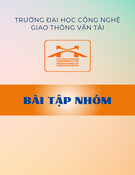
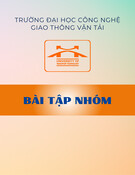
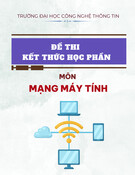
![Đề thi học kì 2 môn Nhập môn Mạng máy tính [kèm đáp án]](https://cdn.tailieu.vn/images/document/thumbnail/2025/20251014/lakim0906/135x160/23811760416180.jpg)

